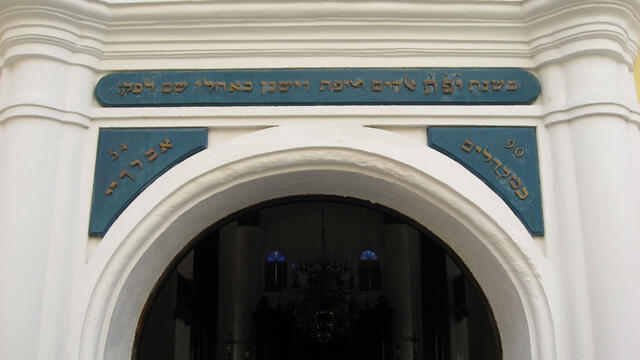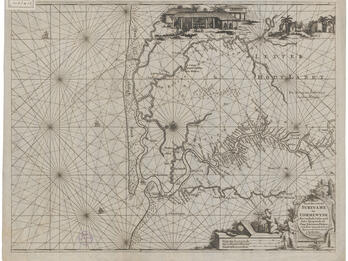Jews Arrive in the New World
The 17th century saw Jews establish the first organized New World settlements.

In the seventeenth century, the Jewish diaspora attained unprecedented geographical dispersal. For the first time, an organized Jewish settlement was established in the New World. The possibilities and challenges offered by the Dutch and English colonies in the Americas attracted Portuguese Jewish merchants. Jews from Amsterdam settled in the Dutch colony of Pernambuco, in northeastern Brazil, an area the Dutch had conquered from Portugal. The first Jewish community in the New World, the Zur Israel community, was established in Recife, the capital of Pernambuco, in 1637. The Jews there were joined by quite a few New Christians, who took advantage of the Dutch conquest to return to Judaism. The 1,450 Jews who lived in Dutch Brazil in 1645, who made up around half the white European population there, attained absolute civil equality in relation to the European Christian population there. They received permission to hold Jewish prayers in full freedom. This was the beginning of Jewish settlement in the Americas. But the process was neither smooth nor free of obstacles. The Portuguese reconquest of Pernambuco in 1654 put an end to Jewish presence in Brazil. The 650 Jews who were residing there when the Dutch colony fell into the hands of the Portuguese scattered in various directions. Some returned to Holland, and others relocated within the Americas, forming new Jewish communities, mainly in the Caribbean. A group of refugees from Recife arrived in New Amsterdam in North America. They were among those who laid the cornerstone for what would be the New York Jewish community, after the Dutch colony passed into English hands in 1664.
In 1659, with the arrival of seventy Sephardic Jews from Amsterdam, the Jewish community of the Dutch island of Curaçao was established. The Dutch West Indian Company granted extensive rights to these Jewish settlers, with the intention of directing them to agricultural pursuits. However, they preferred to continue doing what they were used to: engaging in maritime trade. Some became ship owners and sailed through the Antilles and the Caribbean islands and along the coast of Venezuela. At that time, and throughout the eighteenth century, many ships with names such as Zebulon and Issachar, Bracha and Shalom, Mazel Tov, and the like plied the waters of Central America, their names pointing to their owners’ identity.
In the 1660s, Jewish communities arose on the Caribbean islands of Martinique, Barbados, and Jamaica. Sephardic Jewish settlers came not only from Amsterdam but also from Livorno, Hamburg, London, and Bayonne. Some of them found their way to Suriname and joined the Jewish settlement that had begun to flourish there in 1667, after it was captured by the English. Jewish settlers began to clear land that had been granted to them for agriculture; to this day it is called Joden Savanne (the Jews’ Savanna). The first synagogue there was established in 1685 and was called Beracha ve-Shalom (Blessing and Peace). In 1694, ninety-two Portuguese Jewish families were living in Suriname, as well as about a dozen Ashkenazic families: in total about 570 people. Jews owned forty sugar plantations and nine thousand slaves, and by 1730, the number of plantations owned by Jews had risen to 115. At that time, however, the Jews began to leave the forested areas in the interior of the country and move to the city of Paramaribo, on the coast, where they became local and international merchants.


![M10 622 Manuscript, probably from Ukraine]. Manuscript probably from Ukraine, c. 1740 with a broad collection of practical kabbalah and mystical magic. Facing page manuscript arranged vertically with Hebrew text in the shape of a figure wielding two long objects.](/system/files/styles/entry_card_sm_1x/private/images/vol05/Posen5_blackandwhite166_color.jpg?h=cec7b3c9&itok=Sz6u21MQ)
